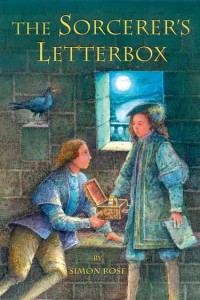Historical Fiction: Part Eleven – Anachronisms
 In addition to keeping dialogue authentic, anachronisms need to be avoided. Fictional characters in the medieval period or in World War II obviously can’t carry cell phones, check their email, or talk about TV shows. However, characters also can’t have political views that aren’t in keeping with their time, level of education, or social status. The role of women in society was also often very different to today at certain times in the past, for example.
In addition to keeping dialogue authentic, anachronisms need to be avoided. Fictional characters in the medieval period or in World War II obviously can’t carry cell phones, check their email, or talk about TV shows. However, characters also can’t have political views that aren’t in keeping with their time, level of education, or social status. The role of women in society was also often very different to today at certain times in the past, for example.
Sometimes an author uses something in their story that they assume existed in their chosen period but hadn’t been invented or discovered at that time. For example, someone is depicted eating potatoes in a medieval English castle although potatoes weren’t discovered by Europeans until after the voyages of Columbus beginning in 1492. It’s also important to show characters using appropriate firearms for a particular period, such as a rifle or a musket. And while outlaws in the Old West may have used revolvers, pirates sailing the Caribbean two hundred years earlier would not.
Female heroines in historical fiction are often depicted in ways designed to appeal to modern audiences. Their anachronistic attitudes to a woman’s role in society may help readers to relate to them, but this is very much out of step with how women were treated in the eighteenth or nineteenth century, for example. Similarly the author may give a medieval peasant or a Roman slave political views that are utterly out of place with the character’s time period.
Your lead character from the Napoleonic Wars shouldn’t wake up in the morning to his electrical alarm clock, check his text messages, zip up his pants, and have waffles for breakfast, but make sure he’s a true fit for his era in many other ways too.



